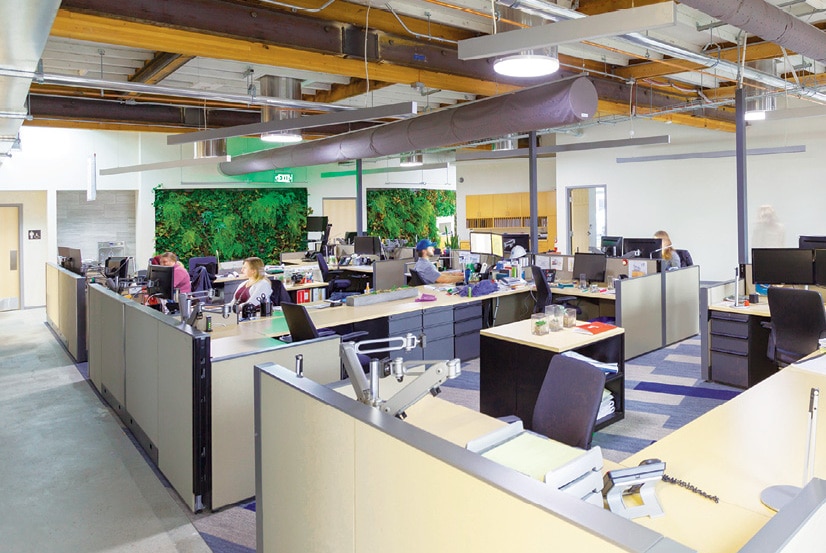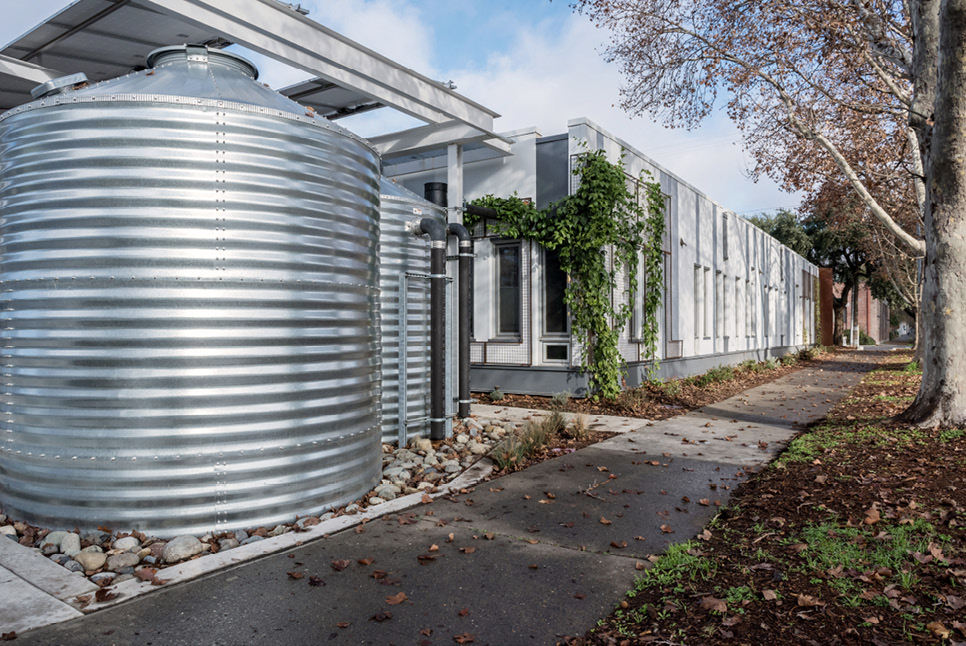
[Photo: Courtesy of Arch | Nexus]
For architectural firms, actions speak louder than words. That’s why Architectural Nexus built its Sacramento office as a manifestation of its values—inspiration, stewardship, and regeneration. The 8,252-square-foot building, called Arch | Nexus SAC, is one of the most sustainably designed buildings out there, earning LEED Double Platinum certification and the title of the first certified Living Building in California as well as the first Living Certified reuse project in the world.
The building was originally a print shop and warehouse, but was reimagined in 2015 to become the firm’s Sacramento office. Renovating an already existing structure instead of building an entirely new one saved massive amounts of waste from going to a landfill, and all of the building material that was not reused on site was collected and recycled.
When the project was conceived, California was experiencing a severe drought and water was being rationed in many municipalities across the state, so Arch Nexus made water efficiency a main priority and hoped it could encourage others to adopt similar methods to conserve water in the state and around the world. Waterless urinals, composting toilets, and low-flow fixtures help reduce water use, and Arch | Nexus SAC also harvests and stores rainwater by capturing water on the roof and funneling it into cisterns that are then treated onsite and used throughout the building and to water the living wall. The building is equipped to provide 100% of all water from rainwater, making it a net-positive water project.
The building also achieves net-positive energy status by reducing the initial energy footprint as well as generating its own energy. Special daylight harvesting devices that converts direct sunlight into soft indirect daylight indoors, highly efficient LED lighting system, air-cooled Variable Refrigerant Flow HVAC system, operable windows for natural ventilation, and optimized building envelope reduce energy use, while photovoltaic solar panels installed on the roof and connected parking canopy produce 70% more energy than what is consumed in the building. The surplus energy is put on the electrical grid providing energy for other buildings in Sacramento.

[Photo: Courtesy of Arch | Nexus]
Living Building
The Living Building Challenge is a green building certification program and sustainable design framework that visualizes the ideal for the built environment. It uses the metaphor of a flower because the ideal built environment should function as cleanly and efficiently as a flower.
LEED Double Platinum
Although rare, a few buildings have garnered LEED Platinum certification in two rating systems. These buildings are considered Double Platinum. Arch | Nexus SAC has done so in the LEED BD+C: New Construction and Major Renovation and LEED O+M: Existing Buildings.
Net-Positive Energy
Through a combination of energy efficiency measures and on-site renewable energy, a building can produce more energy than it consumes over the course of the year, thereby becoming net-positive. Through the use of net-metering, surplus energy is transferred to the electrical grid.

[Photo: Courtesy of Arch | Nexus]
Living Wall
Not only does a vertical installation of plants provide fresh oxygen and a pleasing, beautiful connection to nature, it serves as a fundamental function of a highly sustainable building. Most green walls also have an integrated water delivery system.
Net-Positive Water
By storing precipitation that falls on-site as well increasing efficiency of water use, a project can create more than enough water for itself without relying on municipal water supply. Additionally, by recycling potable water into gray water, and then into black water, and then through the use of on-site composters, a building can safely treat all of its own wastewater.
